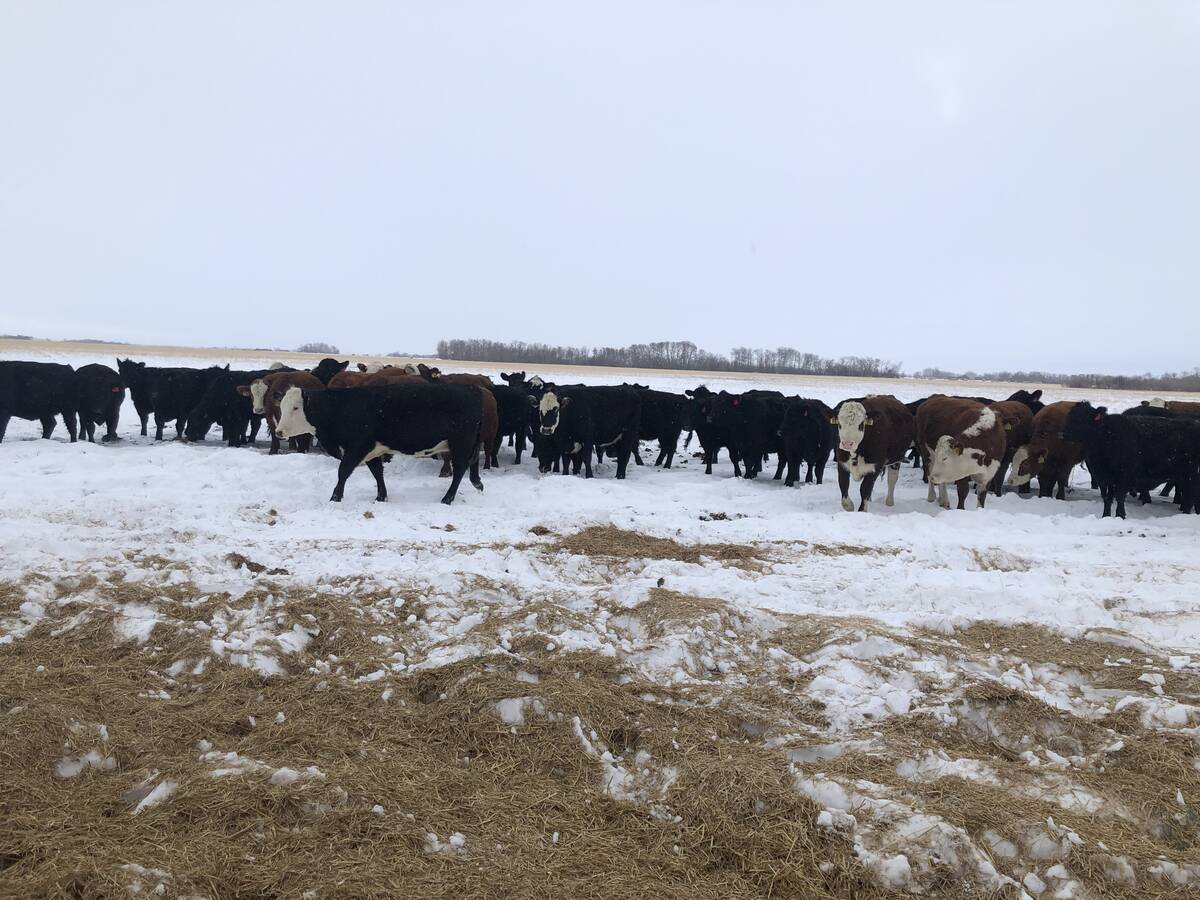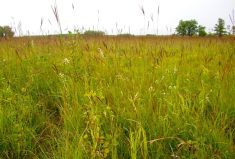The central grasslands of the northern great plains of Western Canada is a major forage growing area and makes up a significant portion of the landscape of the Prairies. This semiarid region extends from southwestern Manitoba to southwestern Alberta; north to just below Saskatoon and south to the United States border. Swift Current Ag Canada Research Centre or SPARC (Semiarid Prairie Agricultural Research Centre) sits in the middle of this area and focuses on native grasslands research for the region.
Read Also

Picking the most efficient cows to rebuild your cow herd
A new cow ranking system to help beef farmers and ranchers pick the most efficient cows as they rebuild their herds.
Climate models suggest the Swift Current climate will extend to other regions in the Prairies over time which adds some impetus to the work of range ecologist Dr. Mike Schellenberg and grazing management and animal nutritionist Dr. Alan Iwaasa to keep livestock on pasture longer in this area where recurring droughts are common.
“Our research is directed to identify appropriate species mixtures, their benefits and resilience potential to deal with extreme weather events, provide nutritionally adequate forage during the dry summer slump periods, and during the winter feeding period,” says Schellenberg. “In order to do this, one needs a supply of potential species and thus the reason for our mainly native plant breeding effort. We are identifying species mixtures for resilient forage plant communities along with the use of perennial grasses, perennial legumes and annuals for forage production as part of the grazing management strategies for the native rangelands.
“Along with nutrition, you want plants that are able to extract their resources from the entire soil profile. Plants have different rooting depths, often deeper than Kentucky bluegrass or smooth brome — two common introduced species — to pull up much needed moisture and soil nutrients. We are working with a number of other species that explore the soil environment differently. For example, native legumes such as prairie clovers with a taproot, little blue stem with a deep fibrous root, and northern wheatgrass with a rhizomatous root system.”
The program does not only look at species but also their function. For example, they’ve identified a benefit in having two legumes (alfalfa, purple prairie clover) as opposed to a single legume with grass. Traditionally, it has been recommended producers grow a single legume; however, the researchers are now finding two legumes produce the highest hay yields while having two grasses (western wheatgrass, green needle grass) is better than having a single grass for grazing and biomass production in this arid region.
The right combination of species will improve nutritional quality, especially for crude protein. Pastures comprised of warm-season grasses plus cool-season grasses which mature later, will have better quality in the late summer compared to a pasture with only cool-season grasses. They are also looking for mixtures that maintain themselves rather than a mix with overly aggressive species that result in a monoculture. Grazing management systems are also being examined as this has an influence on how the mixture is maintained.
From the Grainews website: Winter cereals pressed into double duty
“We are not only working with perennials as we have recently obtained research funding to determine the possible benefits of mixtures of annuals. The ground-work is being done by Dr. Jillian Bainard and we are working with three species of annual grasses (barley, oats and triticale), three species of legume (hairy vetch, field pea, forage pea), three root crops (forage radish, purple top turnip, kale) and three warm-season grasses (corn, millet, sorghum) as monocultures and in 2-, 4-, 8- and 12-species combinations. All of these species are presently being grown in this semi-arid region. The actual number of species in a mixture is also being evaluated, and the first results have shown mixtures with the greater number of functional groups and species provide better biomass than most monocultures, as well as improved weed and insect control.
“There has been a decrease in weed diversity and numbers and there has been no pesticide applied to these plots,” says Schellenberg. “We also see a notable shift to beneficial pollinating insects with mixtures. We are also evaluating soil analysis and nutritional quality of the different mixture combinations.”
Native species
The Swift Current team is also evaluating a number of native species for grazing yield potential including side oats grama, nodding brome, rough fescue, prairie sand reed and northern wheatgrass as well as the introduced grasses hybrid brome, meadow brome, and crested wheatgrass in conjunction with Dr. Bruce Coulman at the University of Saskatchewan/Ag Canada, Saskatoon. A number of native legumes are also under investigation: prairie clovers, Canadian milkvetch, slender milkvetch and ascending milkvetch as well as alfalfa. This work was originally initiated under Dr. Grant McLeod, now retired. Species such as the prairie clovers provide quality forage and possibly more. Most native plant species remain largely unexplored for potential benefits like the condensed tannins in prairie clovers as well as their antimicrobial effect, and the increased digestion of other feed components as has been noted for the semi-shrub winterfat.
Just as research is reliant on financial partnerships within and without the research community, Schellenberg says resilient plant communities are dependent on strong working relationships among forage plants. “These right combinations of plants and research people will increase and maintain productivity while providing benefits beyond just forage yields,” he says.
Just down the hall from Schellenberg’s office, Dr. Alan Iwaasa is evaluating grazing and forage effects on livestock production, using different management practices, and looking at the effects on the environment. “Beef cow-calf producers want to keep their livestock longer on pasture and reduce winter feed costs and this is the research strategy that we are looking at,” he says. “We are evaluating grazing native and tame grasses under different grazing systems including work with the new saline-tolerant grass, AC Saltlander. In addition, we are studying the benefits of grazing legumes containing condensed tannins, such as sainfoin, purple and white prairie clovers and their potential benefits to reduce E. coli shedding from cattle and increase nitrogen utilization.”
Other research is looking at the effects of changing calving times to calve on spring grass, the benefits of feeding biofuel byproducts in a grazing system and the impact of winter bale grazing on the environment.
“We are looking at re-establishment of grasslands from long-term cropping systems using a simple seven-species or a 12-species mixture to assess long-term grazing, forage production, biodiversity and environmental benefits. No nitrogen fertilizer and continuous and/or rotational grazing was used. We found that although at first the aggressive cool-season grasses, western wheat grass, northern wheat grass and slender wheat grass associated with the simple native mixture established quickly and gave increased forage production, the complex native mix eventually provided similar forage production. It is difficult to envision a selection of tame grasses that could provide the tolerance and ability to adjust to changing environmental conditions from one extreme to another. A more diverse pasture mixture allows the animal to make grazing selections and this resulted in higher livestock performance with a 15 per cent improvement in gain of beef per hectare for complex mixtures. Each set of complex pastures were grazed in the spring, summer and fall in a three-year rotation as a deferred rotational grazing system. Higher livestock performance (10 per cent) for grazing more diverse pasture mixture were also observed under a continuous grazing system.”
“There was very good persistence of the purple prairie clover and many of the warm- and cool-season grasses. The only grasses that seem to have declined were slender wheatgrass, which was not surprising, and needle and thread grass which was a bit surprising since we were grazing at 50 per cent utilization level. In the native deferred rotational grazing, we did see an increase in the little bluestem plant population and purple prairie clover, which was also not surprising, since we were deferring on grazing in the spring and summer grazing period, which allowed little blue stem and purple prairie clover to set seeds for the fall grazing period.”
Purple prairie clover is a warm-season legume and its main growth is during July and September, in the mid-summer growth slump. It’s a drought-tolerant forb with nitrogen-fixing abilities that provides good forage quality, grazing preference and an ability to extend the grazing season. The digestibility ranged from 65 to 50 per cent from vegetative to seed pod stage, while crude protein ranged from 20 to 12 per cent over the same time. The plant also contains condensed tannins, and thus improves protein utilization and feed efficiency which is important for fall grazing. The condensed tannins also can reduce E. coli 0157:H7 and is anti-parasitic. The Swift Current team also found that purple prairie clover increased biodiversity and helped bee pollinators prosper.
Another study that Iwaasa is involved in used sainfoin in alfalfa to reduce the risk of bloat. “Fifteen per cent or more sainfoin in an alfalfa mixture can eliminate risk of pasture bloating,”
“We are evaluating different sainfoin germplasms in alfalfa mixtures to achieve bloat-safe grazing by grazing the stands when sainfoin is at full flower and alfalfa at 25 to 30 per cent bloom. We are also interested in stand longevity and after five years we still have 15 per cent sainfoin in the sward for continuous and rotational grazing systems and no bloating incidences occurred throughout our grazing study.”
Both Schellenberg and Iwaasa stress that for perennial forage and grazing research to deliver meaningful results requires long-term grazing studies, longer than five years. There is a need for funding to support this work and the people with the training to do it. That continues to be a challenge for researchers whose ranks have been thinned in recent years by retirement and resignations. c
Duane McCartney is a retired forage and beef research scientist from Lacombe, Alta.
















